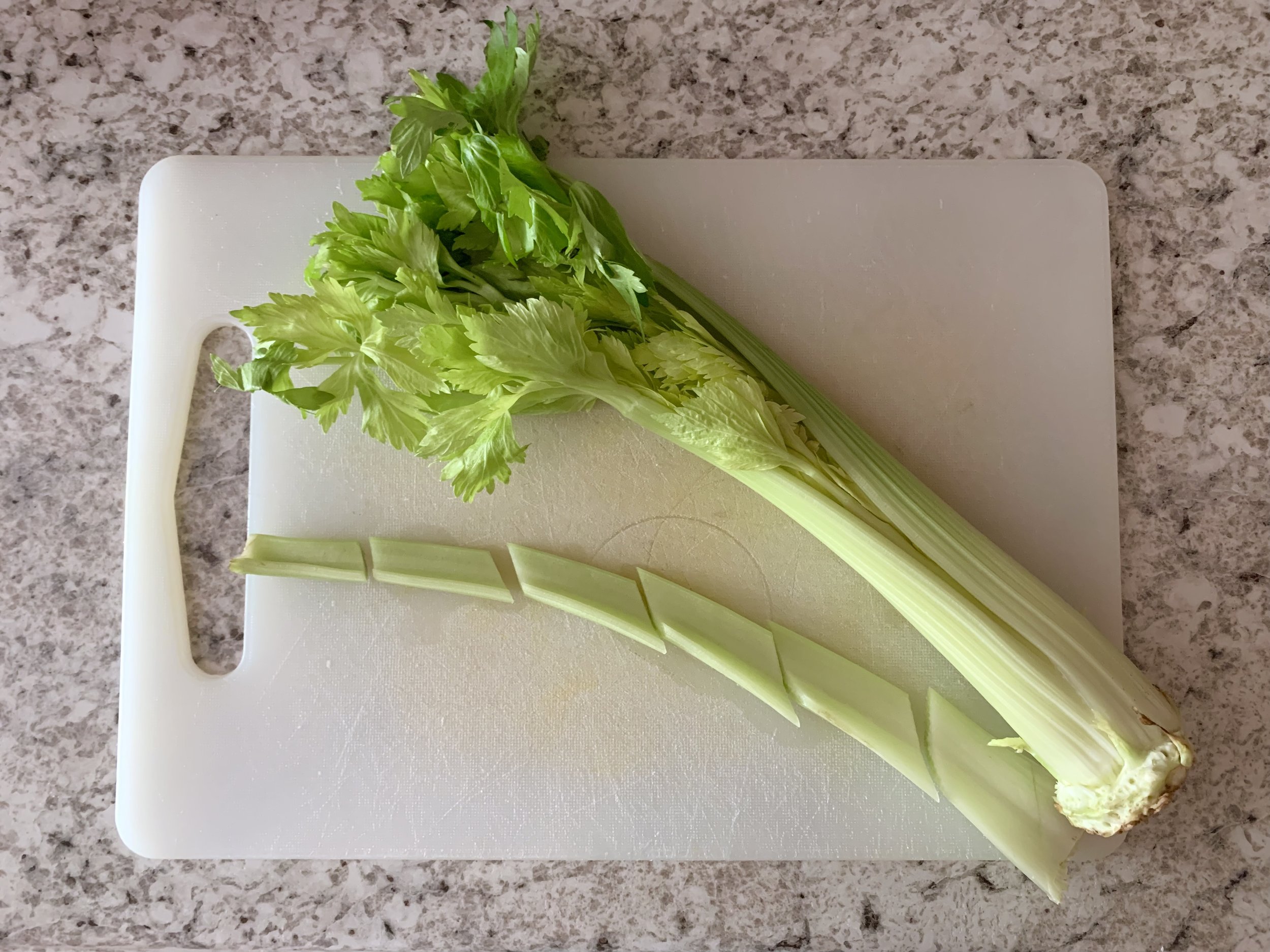Not So Fun In The Sun
These are things that go well with sun: surf, sand and barbecue. These are things that DO NOT go well with sun: staring contests, nudist camps and eating too much celery.
Celery has been the go-to snack for dieters seeking the summer’s perfect beach body, but too many of these fibrous stalks could cause a lot of pain . . . literally. Vegetables such as celery, parsnips and parsley produce photosensitizing chemicals called furocoumarins. These chemicals can enter the nucleus of a cell, and if the cell is exposed to UV radiation, the chemicals can bind to the DNA there and cause strands to cross-link, or stick to each other. This cross-linking interferes with the normal processes of copying and transcribing DNA. Ultimately, the cell loses its ability to function in a healthy state and either self-destructs or becomes cancerous. The result can be a moderate to severe sunburn known as phytophotodermatitis (PPD).
The onset of PPD is often delayed by as much as 24-48 hours. So your celery-stuffed self can enjoy a full day at the beach before you erupt into a mass of angry rashes. Cases of PPD related to celery are frequently recorded among produce-handlers on farms or in grocery stores. Blisters and rashes appear on arms and hands of these individuals and are often more severe on individuals who frequent tanning salons. The majority of cases occur when skin comes in contact with the celery sap or juice, but consumption of celery can also result in PPD. One report from 1990 describes the case of a 65-year-old woman whose 30 minute stint in a tanning booth, an hour after consuming an entire celery root, landed her in the hospital two days later with severe skin reactions, a fever and several large blisters.
If you are now a little terrified of celery, here are some things to consider. Furocoumarins work when exposed to sunlight, so your digestive tract is safe. Not all cultivars of celery produce the same levels of furocoumarins, and different varieties are constantly being monitored to make sure those levels are low. While healthy celery plants make furocoumarins, these chemicals are most often produced during states of stress or disease. Cases of celery-caused PPD are often linked to diseased vegetables infected with fungi or bacteria. So maybe don’t eat that yellowing, withered celery in you crisper drawer right before your ocean-side clam bake.
Have a nice summer!
Brian Rutter, PhD, is the cofounder of Thing in a Pot Productions and a postdoctoral researcher in plant biology at Indiana University. Subscribe to our newsletter to receive our “Things About Things – Odd Facts About Plants” and video production tips in your inbox every month!
Works Cited:
Ashwood-Smith, M. J., O. Ceska, and S. K. Chaudhary. "Mechanism of photosensitivity reactions to diseased celery." British Medical Journal (Clinical research ed.) 290.6477 (1985): 1249.
Chaudhary, Sunil K., et al. "Increased furocoumarin content of celery during storage." Journal of Agricultural and Food Chemistry 33.6 (1985): 1153-1157.
Dall’Acqua, F., et al. "Formation of inter-strand cross-linkings in the photoreactions between furocoumarins and DNA." Zeitschrift für Naturforschung B 26.6 (1971): 561-569.
Finkelstein, Eve, et al. "An outbreak of phytophotodermatitis due to celery." International journal of dermatology 33.2 (1994): 116-118.
Ljunggren, Bo. "Severe phototoxic burn following celery ingestion." Archives of dermatology 126.10 (1990): 1334-1336.
Seligman, Paul J., et al. "Phytophotodermatitis from celery among grocery store workers." Archives of dermatology 123.11 (1987): 1478-1482.

